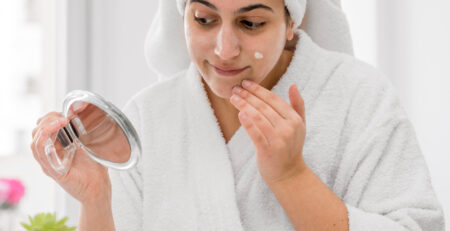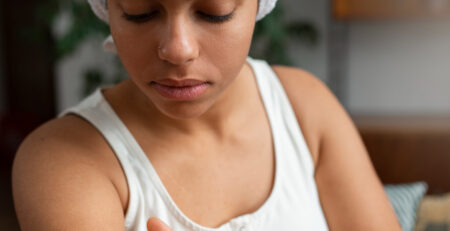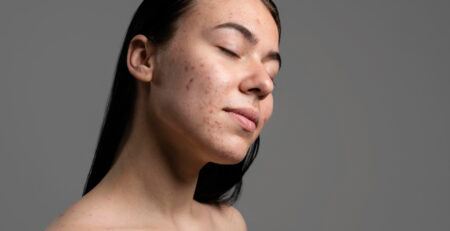Everything You Need to Know About Skin Cancer Screenings
One of the most common kinds of cancer in the world is skin cancer. A skin cancer screening can find skin cancer, which is good news. The American Academy of Dermatology recommends that people check their skin regularly and make an appointment with a qualified dermatologist if they find any signs of skin cancer.
Dermatologists know how to check for skin cancer. Read on to find out everything you need to know about skin cancer screenings if you think you could benefit from one.
What Are Skin Cancer Screening Exams?
How do you find skin cancer? This is where a screening for skin cancer or a check for skin cancer comes in. Exams to check for skin cancer involve looking at the skin to see if there are any signs of cancer. You can do the exam or, better yet, a board-certified dermatologist should do it.
It’s important to remember that screening doesn’t always mean that cancer is present. But if the screening finds something that worries us, we can do more tests. Usually, a biopsy is needed to find out if someone has cancer. Skin cancer screenings should be done as soon as possible, while the chance of healing is still high, for the best possible outcome. Skin cancer can spread quickly, so it is important to find it early.
Signs You’re at Risk and Need a Skin Cancer Screening
When should you have your skin checked by a dermatologist? In general, it doesn’t hurt to have routine exams once a year, especially if you are at high risk for skin cancer. If any of the following are true, you are more likely to get skin cancer:
- History of skin cancer, moles that aren’t normal, or other skin problems
- Having a lot of moles or moles that don’t look right
- Fair skin or freckles, red or blonde hair, blue, green, or light-colored eyes.
- Use of tanning beds for a long time
- Sun exposure over a long period of time or a history of blistering sunburns
- Severe sun damage
- Have someone in your immediate family who has had skin cancer a person who got a new organ
- Weakened or suppressed immune system
If you said “yes” to any of these, you may need to get checked for skin cancer. Still, it’s best to talk to your doctor about how often you should get screened, whether you do it yourself or at the doctor’s office. Before giving you personalised advice, your dermatologist will figure out how likely it is that you will get skin cancer.
In addition to the risks we’ve already talked about, your dermatologist will also think about things like your age. The Centers for Disease Control and Prevention (CDC) says that most cases of skin cancer are found in people over 65. Also, people of all skin tones can get skin cancer, but it happens less often to people of colour than to Caucasians. Still, no matter what colour your skin is, you should see a dermatologist right away if you notice any red flags on your skin.
What To Expect During a Skin Cancer Screening
When it comes to how skin cancer is found, keep in mind that most people find it at home first, and then their dermatologist gives them a medical diagnosis.
How Is Skin Cancer Detected at Home?
When doing a self-exam, you need to look at every part of your body, from your head to your toes. Make sure you have a lot of good lighting and a full-length mirror as well as a hand mirror so you can see all parts of your body. Check your face, neck, stomach, under your breasts, back, buttocks, genital area, sides, forearms, hands, feet, and other places.
What will you look for when you check the skin? Most of the time, you’ll be looking for moles that aren’t round and can be seen with the naked eye. Experts have come up with the “ABCDE” rule to make it easier to check for moles at home:
- Asymmetry – The mole has an odd shape, meaning the two halves don’t match.
- Border – The mole has a sore or irregular edge that may or may not bleed.
- Color – The mole has an uneven color.
- Diameter – The mole is larger than a pea or pencil eraser.
- Evolve – Something has changed about the mole’s size, shape, or color.
During your mole checkup, you should also pay attention to any moles that are sore, crusty, painful to touch, ooze, bleed, or don’t heal like they should. If your mole screening finds something that worries you, you should talk to a Top Brithika dermatologist as soon as possible.
How Is Skin Cancer Detected and Diagnosed by Your Dermatologist?
When you go to a dermatologist for a skin cancer check or a mole check, they will also do a full body exam. Your dermatologist will also look for the “ABCDEs,” which are signs that you might have skin cancer. Most of the time, the skin cancer check takes between 10 and 15 minutes, unless the doctor needs more time to look into something out of the ordinary.
If the skin check is done in a private place, you will likely have to wear a medical gown. You might be able to keep your clothes on, though, if the screening is only done on your face, neck, and hands. During the inspection, you should be ready to answer a few questions about the moles, if you have any.
What Happens If the Doctor Finds Something?
If your dermatologist sees a mole that could be a problem, they will probably take a sample and send it to a lab. The mole biopsy will then show if there is cancer of the skin. If cancer cells are found, your dermatologist will explain how to treat them and what to do next.
What Else Do I Need to Know for My Skin Cancer Screening?
Check out the information and tips below to learn more about skin cancer screenings:
- There are no risks to getting your skin checked, whether you do it yourself or make an appointment with a dermatologist. Also, you don’t need to do anything special before seeing your doctor besides not wearing makeup and letting your hair down.
- Melanoma, basal cell carcinoma, and squamous cell carcinoma are the three main types of skin cancer. The most common type of cancer is basal cell carcinoma, which grows slowly and stays in place. Squamous cell carcinoma is the second most common type of skin cancer, and it can spread to deeper layers of the skin. Melanoma is the rarest type of skin cancer, but because it spreads quickly, it is also the most dangerous and aggressive.
- If you’re going to get regular skin cancer checks, you should also try to live in a way that lowers your risk of getting skin cancer. This means using sunscreen every day and not going out into the sun or getting a fake tan.
Schedule a Consultation with a Brithika Affiliated Dermatologist
The American Academy of Dermatology says that every day, about 9,500 people in the U.S. are told they have skin cancer. Most skin cancers are very easy to treat, especially if they are caught early. One of the most important parts of taking care of your skin is being proactive.
A skin cancer screening can be done by a highly qualified dermatologist who is part of the Brithika . All you have to do is search our community of medical specialists and get in touch with us right away to learn more about how we can help you.












Leave a Reply